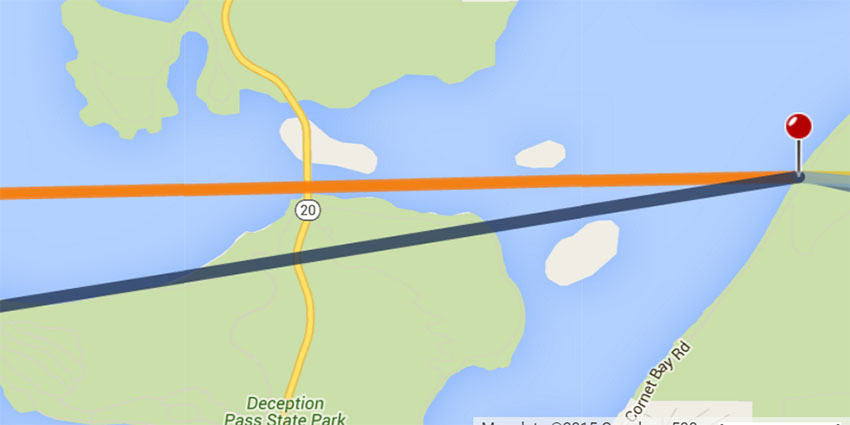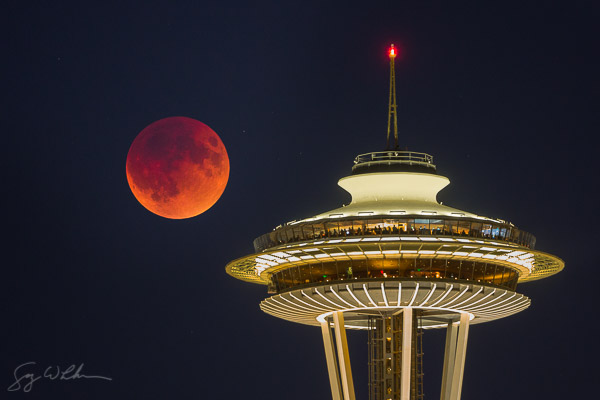Photographically, September was a good month. In part this was due to The Photographer’s Ephemeris, a free and popular outdoor photographer planning software. I’ve written about Ephemeris before, in 2012. It’s since evolved to be web browser and app-based, no longer a desktop download. Below are two instances where The Photographer’s Ephemeris contributed hugely to getting a shot.
Many years ago, I saw an image of the sun setting beneath the Deception Pass Bridge, a landmark arch that connects Whidbey Island with the Washington State mainland. Shot, I think, serendipitously on film by Seattle Mountaineer photographer Duane Hansen, I asked Duane about it some time later. He couldn’t recall the date the shot was created. Today, of course, image metadata would tell you exactly. But today we also have other tools, and The Photographer’s Ephemeris allowed me to pinpoint a small window of dates when the sun touches the horizon beneath the bridge before disappearing into the Strait of Juan de Fuca.

My goal was to get a kayaker inside the ball of the sun with a telephoto lens, with and without the bridge in the frame. I once got a kayaker/sun ball shot years ago in Baja, MX. That one was easier to achieve, with the sun rising across the Gulf of California and no obstructing land to deal with. Complicating the Deception Pass shoot, I didn’t know if I had enough sea behind the bridge to make it happen. Would the sun simply set behind distant Vancouver Island? It depended on the elevation of the Island’s rather rough topography.

A second September instance of Ephemeris use occurred with the fourth lunar eclipse in two years, a tetrad. I thought a blood moon alongside the Seattle Space Needle could be compelling. But where to line up moon and Needle? A blood moon shot window like this would be short. Numerous on-line sources predicted time, declination and altitude of the blood moon, from which I gleaned that the moon would rise in Seattle already in eclipse, but hold it long enough to possibly make the shot work.

